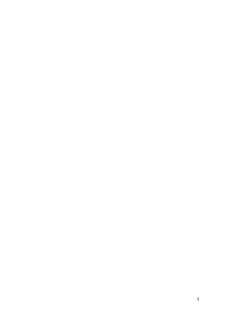| dc.description.abstract | Background: Chemotherapy treatment for childhood cancer impair the cellular and humoral immune system in various degrees and affects the previous protection of childhood vaccination. Studies have shown protective antibody levels after revaccination of children treated with chemotherapy and this has led to different national revaccination guidelines, including Norwegian guidelines. In a study by Crawford et al [1] on Australian childhood cancer survivors, compliance to revaccination guidelines was poor. It was uncertain to what degree revaccination recommendations have been implemented at the Children's Department of St.Olavs University Hospital as well as compliance to these recommendations. We therefore investigated implementation of these guidelines at the Childrens Cancer Unit, St. Olavs Hospital. It is difficult to investigate whether revaccination of childhood cancer survivors protects against the actual diseases because of a limited patient population combined with rare diseases, thus an indirectly measure of the effect of revaccination is quantification of vaccine-specific antibodies titres and immunoglobulin concentrations. Results from studies varies in antibody titres and immunoglobulin concentrations and we wanted to get an impression of the role of different chemotherapy regimens, single drugs or the role of time on revaccination. Hoping to raise new questions about humoral reconstitution post-chemotherapy and the actual need for revaccination we did a pilot study measuring rubella-specific antibody titres and immunoglobulins before and after chemotherapy treatment in childhood cancer survivors.
Methods: Children aged 0-18 years at time of diagnosis who finished chemotherapy treatment for cancer between 01.01.2010 to 31.12.2016 at St.Olavs University Hospital, Trondheim, Norway were included. Excluded were patients who had relapsed or died, or patients who had moved to another geographical region. In 2010 a guideline for revaccination after chemotherapy for children (RvG) was proposed for Norwegian paediatric oncologists (Flægstad and Knudsen) and has partly been used at the childhood cancer unit at St.Olavs University Hospital. The compliance of the RVG was evaluated through three sources: i) review of patient files, ii) through a questionnaire sent to the families, and iii) from data obtained through the national vaccine-register of Norway (SYSVAK). Recommendations given from the responsible clinician should have included an individually based revaccination schedule of DTP-IPV-Hib, MMR and pneumococcal vaccine, and been given within one year after cessation of therapy to be classified as appropriate. Revaccination had to include a first dose of DTPIPV-Hib and pneumococcal vaccine(s) given within a year after cessation of chemotherapy and MMR given within a year after the recommended time in the RvG or a restart of the childhood vaccination program for patients <15 months at time of diagnosis to be adequate. Rubella antibody titres were analysed both from frozen samples taken at start of treatment and after finishing treatment. Immunoglobulin-levels were analysed after finishing treatment.
Results: 70 patients with a median age at diagnosis of 8,0 years were included. Of these, 34 were girls (48,6%), 26 patients had leukaemia (37,1%) and 44 patients had solid tumours, including CNStumours (62,9%). Review of patient journals showed that 67,1% (47/70) had gotten an acceptable revaccination recommendation of DTP-IPV-Hib and MMR, but only 25,7%(18/70) received a complete recommendation when including the requirement of pneumococcal vaccine. Of the questionnaires sent to the participants 81,3%(26/32) said that they had received a recommendation at our centre on revaccination after cessation of therapy. Current revaccination guidelines had partly been followed for the majority of patients. However, barely 1/5 of childhood cancer survivors had completed an adequate revaccination schedule. Participants given recommendations on revaccinations were more likely to receive booster vaccination post-chemotherapy. Because of the short time-span of this study, only 12 patients were included for biological studies. For eight of these patients serum was available from start of therapy. Of the four patients who had not received a boost of rubella vaccine, all had a decrease in rubella antibody titre during treatment, of which two had fallen from protective to un-protective antibody levels. 11 patients had normal IgG-, IgA- and IgM-concentration at various time after cessation of therapy, while one patient had low IgM-concentrations.
Conclusion: We have shown that there has been insufficient compliance with current guidelines for revaccination at our centre. Quality assurance of compliance with current guidelines for revaccination of childhood cancer survivors is important. A vaccination chart following the patient as a communication-tool towards the community nurse responsible for revaccination, might be a solution. A system for revaccination confirmation in the hospital file should be established. Chemotherapy seems to reduce protective antibody titre levels towards diseases included in the national vaccination program, but larger studies are needed to confirm this and to evaluate which drugs or drug regimens that has highest impact on antibody titre levels. | nb_NO |
